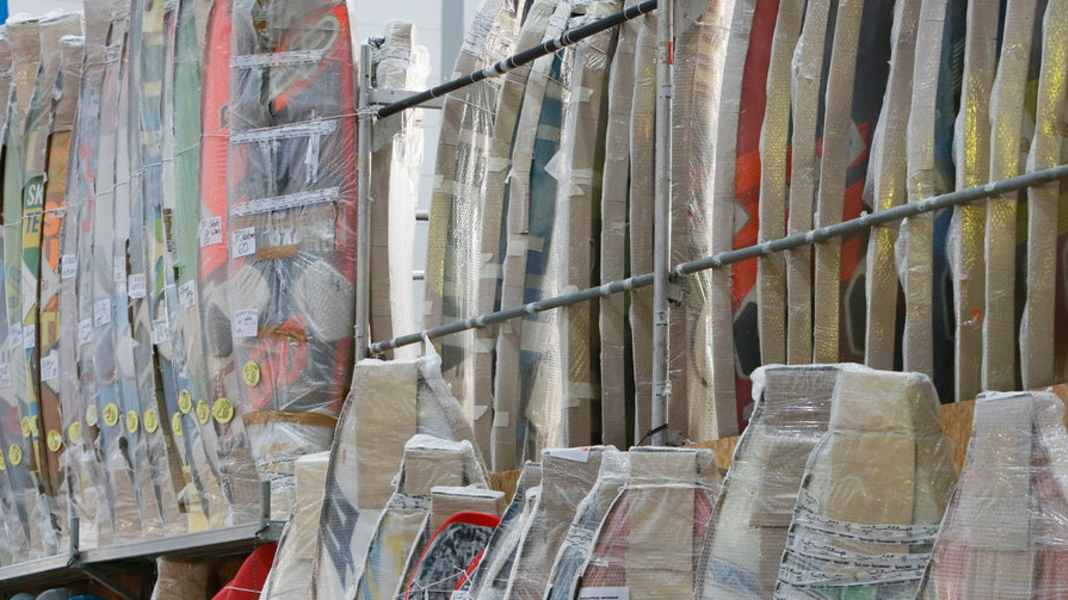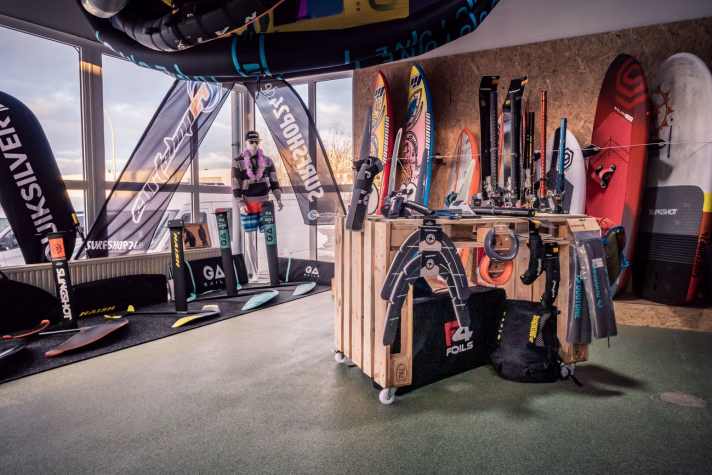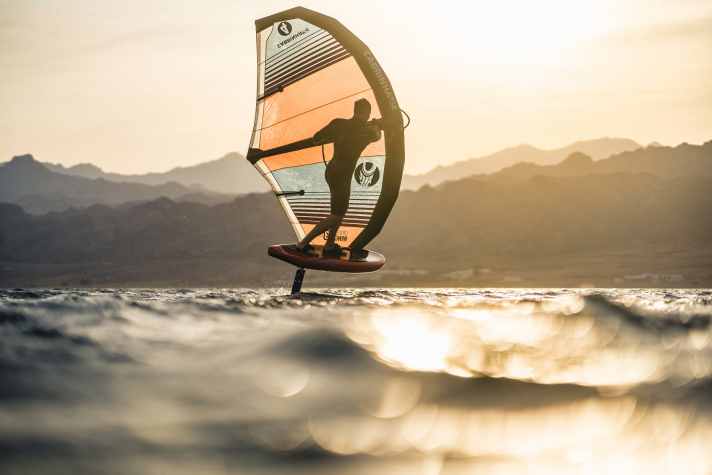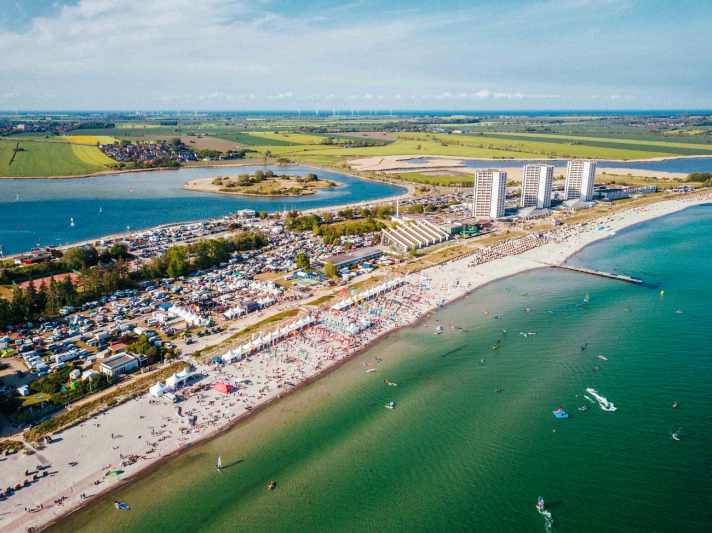
The situation in some surf shops is somewhat reminiscent of the situation in supermarkets at the beginning of the coronavirus pandemic - except that instead of toilet paper, packet soups and dried yeast, other everyday (surfer) necessities are of course missing: A foil? Come back in two months! Wings? Only available in 2.5 and 7.5 square metres! The shorty for the summer? Coming in November! And if you do find what you're looking for, you'll only get a weary smile from the salesperson after claiming the usual industry discount this year.
The fact that after years of guaranteed discounts and reliable abundance, certain goods are suddenly in short supply is not a phenomenon unique to the surfing industry, but it does show in a special way what can happen when an entire industry is dependent on Asian production.
From salesman to counsellor
Patrick Supper from Kailua Sports in Kiel actually sells water sports hardware from brands such as Naish and ProLimit. At the moment, he feels more like a telephone counsellor: "Not a day goes by without shop owners or end customers calling us because they are waiting for ordered goods. Unfortunately, like many other distributors, we can only put people off at the moment, because the coronavirus pandemic has caused the established supply chains to come to a massive standstill. Lockdowns in Asian countries have caused delays, and the container port in Shenzen (China) was completely closed again in June due to a coronavirus outbreak. As a result, the global movement of goods is stuttering considerably," says Supper.
Florian Brunner from APM (importer of Starboard, Airush, Ensis, etc.) points out the complexity of supply chains in the surf industry. The production of a board or wing in the factory is one thing, but there are also many suppliers behind it, some of whom cannot deliver or can only deliver with a delay. Sometimes there is no cloth, then resin for the boards is in short supply or there is a lack of footpads. And if the products are ready at some point, you may not be able to get a container," says Brunner, explaining the problems.

After one and a half years of stuttering production, the otherwise well-organised processes have been thrown into disarray. "In the past," reveals Patrick Supper, "it used to take around six months from the importer ordering the goods to delivery to the shop, but we are currently expecting this period to be extended to up to 12 months. Unfortunately, all brands are currently struggling with this."
Importers have been forced to come to terms with the fact that freight prices for goods from Asia have exploded in recent months. While a 40-foot container from China cost around 2,000 dollars before the pandemic, importer Florian Brunner (APM) reveals that it now costs "12,000 to 16,000 dollars. Due to the rise in transport prices by ship, importers are increasingly switching to rail transport, but capacities are limited.
The situation is a challenge, but overall the surf industry is one of the beneficiaries of the pandemic
Freight costs have increased as a proportion of total costs, particularly for goods with a large volume and relatively low value. "Freight prices used to make up three to four per cent of our calculations," says Patrick Supper, "but recently the proportion has risen to up to 13 per cent for some product groups. For better or worse, the customer has to be prepared for rising prices for certain items."
Industry expert Flo Brunner takes a similar view of the price trend, but also emphasises that "the high demand is also shifting to used material. If you want to exchange your own material, you will probably have to buy more expensive, but on the other hand you will also get more for your used material."

Sale instead of clearance sale
As a result, many importers have to pass on some of the increased transport costs to the shops. On the one hand, this is causing resentment, but on the other, the situation has not been as good as it is at the moment for a long time for the sometimes hard-pressed shops. Corona is acting as an injection of vitality for the entire water sports industry. The run on equipment is huge, and SUP boards, wingsurfing and windsurfing equipment are particularly popular. This means that although many products are currently not available, the stock can be sold without discounts. For people like Frank Lewisch, salesman at Sport Schneider on Lake Neusiedl, this is rather unusual: "We have ordered equipment packages from some manufacturers for 20,000 euros and only received goods for 1,400 euros in the end. Some of the orders for winter neos come in the summer, we expect the shorties in the autumn - great! Nevertheless, the situation also has many positive aspects for the shops. Demand is huge and there's no need to discuss discounts, because ultimately all shops are in the same situation. In my opinion, the current pandemic can be an opportunity for the entire industry - away from the annual model changes, where sometimes only the decor is replaced, and away from a situation where current models are already devalued by successor models in the summer," says Lewisch.
The price of new surf equipment is likely to rise in the medium term. However, this also means that it will be easier to buy used equipment.
However, it is not only the empty shelves in the shop that cause frustration among some end customers, but also the fact that there are always surf shops that suggest an availability online that does not actually exist - a practice that is not legally permissible. The calculation behind this: Once the end customer has pre-ordered (and paid), there is supposedly no longer any risk that they will buy from the competition - customer loyalty is actually different. At present, you can only buy materials safely if they are displayed in the shop with a price tag.
One possibility for newcomers to wingfoiling this summer could be the big test events - on the Baltic Sea, for example, the Foil Festival in Schönberg and the Surf Festival on the south beach on Fehmarn.

It will be exciting to see whether the partially positive developments will outlast the coronavirus pandemic or whether manufacturers will return to the routine familiar from the windsurfing and kitesurfing sector with rapid model changes and an oversupply. This is unlikely to happen in 2022 at least, as it will be at least two years before all the cogs in the supply and production chains mesh smoothly again, according to industry experts.

